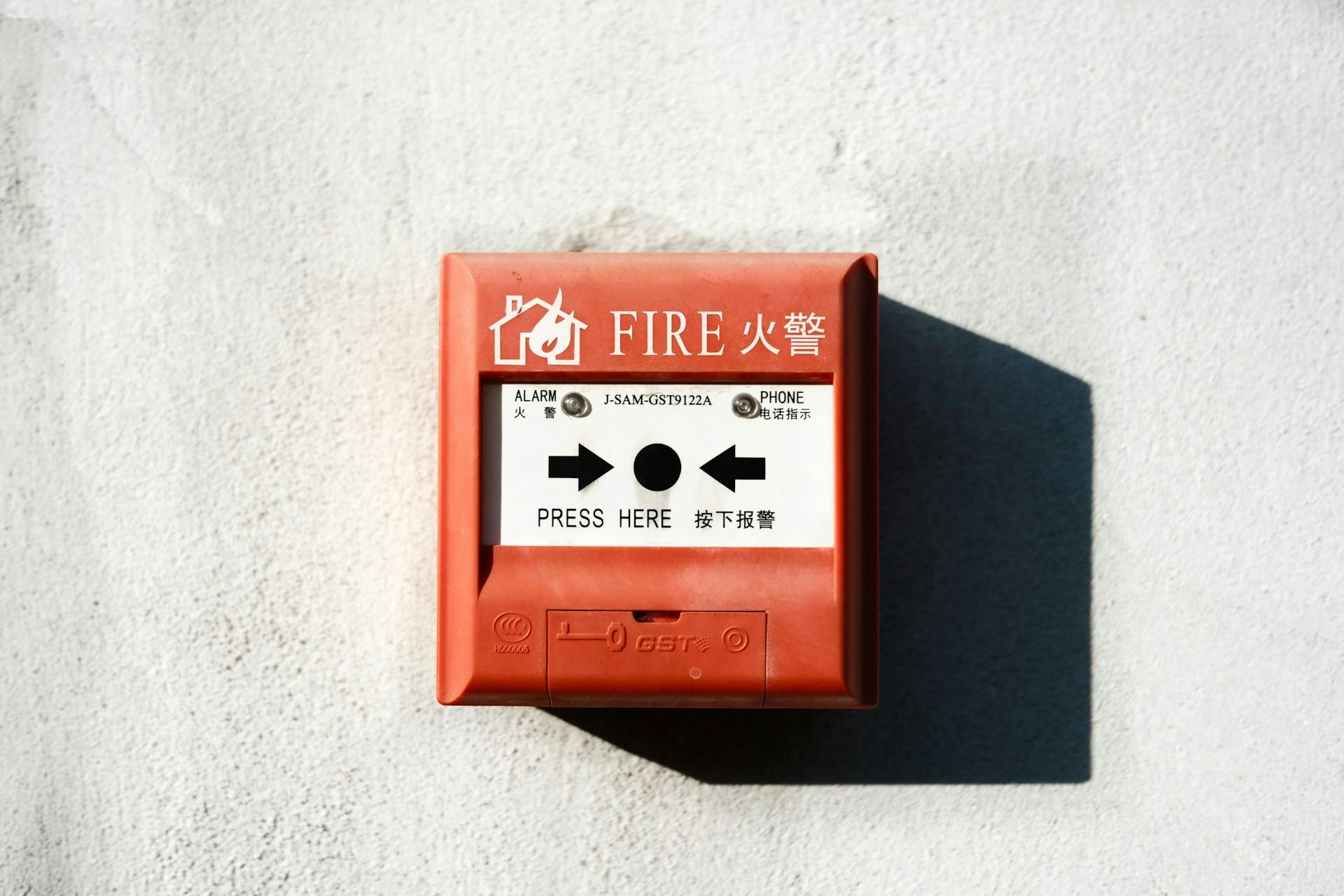Step-by-Step Fire Drill Procedures for Safe Workplaces


Fire safety is one of the most critical responsibilities in any workplace. It’s not just about meeting safety regulations or passing inspections. It’s about building trust with your employees and making sure they feel protected every time they walk through the door. A well-organized fire drill helps reinforce that trust by showing your team exactly how to respond if a real emergency occurs.
Too often, fire drills are treated as box-checking exercises. But when planned with intention and carried out consistently, they become powerful tools for prevention. They help identify weak points in your evacuation plan, train staff to respond quickly under pressure, and ensure emergency systems are working as expected. Most importantly, they reduce panic by turning unfamiliar situations into familiar routines.
Workplace safety is not static. As buildings change, teams grow, and new risks emerge, fire drill procedures should evolve too. This guide walks you through every step of building and executing effective fire drill procedures tailored to your workplace, so your team stays safe, confident, and ready.
Fire Drill Procedures in the Workplace: A Safety Component
Fire drills are not just routine—they prepare employees to act quickly and safely during real emergencies. By simulating fire scenarios, these drills help test evacuation plans, identify weak points in procedures, and reinforce safety training through hands-on experience.
Their purpose goes beyond practice. Drills build muscle memory, reduce panic in real emergencies, and ensure regulatory compliance. They also allow teams to check emergency lighting, signage, communication tools, and evacuation routes. New employees get familiar with protocols, while everyone gains confidence in the organization’s safety plan.
Fire drills support a stronger safety culture. They uncover gaps in communication, confirm roles and responsibilities, and help leadership assess overall preparedness. Done consistently, they signal that employee safety is a top priority.
Brian O'Connor, Technical Services Engineer at the National Fire Protection Association, puts it perfectly: "Finding a middle ground in safety communication is key. When it's talked about too often, it becomes noise and employees will tune it out. But when it's not talked about enough, you can't accomplish your safety and prevention goals."
Regular, well-executed fire drill procedures in the workplace are among the best investments for protecting your people. They prepare you for worst-case scenarios while hoping they never happen.
Implementing a Fire Drill Strategy
Creating a workplace fire drill strategy involves more than running an occasional drill. It requires thoughtful planning, inclusive coordination, and clear communication. When each part is executed well, your team is better prepared to respond quickly and calmly during an actual emergency.
1. Planning and Coordination
A strong foundation starts with proactive planning and cross-team collaboration.
Assign a fire safety leader: Designate a fire safety officer to oversee all fire preparedness activities. This person is responsible for organizing drills, coordinating with departments, and ensuring compliance with safety standards.
Build a cross-functional safety team: Include representatives from different departments, shifts, and roles. This ensures all areas of the workplace are considered and that the evacuation plan applies to every employee, including non-desk workers and those in remote or high-risk areas.
Create a detailed evacuation plan: Your plan should include -
- Clearly marked evacuation routes and exits
- Designated outdoor assembly areas
- Backup escape paths in case primary exits are blocked
- Assigned roles such as fire wardens, sweepers, and assembly point coordinators
Each team member should know their responsibilities during a drill or emergency.
Schedule regular drills: Run drills at various times and under different conditions (e.g., weather, shift changes). This helps prepare employees for a variety of real-world scenarios.
Include non-desk and mobile workers: Consult workers in warehouses, job sites, or remote locations. Their feedback helps you identify potential communication or logistical barriers during evacuation. You may also need special protocols for workers who travel between buildings or work off-site.
Prepare for special needs: Develop personalized evacuation plans for employees with mobility limitations, temporary injuries, or other health considerations.
Coordinate with emergency services: Engage your local fire department to review your plan and provide input. This strengthens your plan and builds important relationships before a crisis occurs.
Plan for operational variables: Identify equipment that must be safely shut down before evacuation and assign responsibilities. Also, determine the process for verifying when it’s safe to re-enter the building after an evacuation.
2. Communication Strategy
Clear communication ensures everyone knows what to do, when to act, and how to stay safe during drills and real emergencies.
Use multiple communication channels: Combine company-wide tools like the intranet and email with physical signs and verbal briefings. Reinforce important messages during team huddles or safety meetings.
Prioritize SMS for non-desk employees: Text messaging is one of the most effective ways to reach non-desk workers. Unlike emails, texts are opened quickly and do not rely on internet access. SMS ensures messages reach every phone, no downloads required. The best SMS platforms allow you to:
- Deliver real-time emergency alerts
- Provide drill instructions instantly
- Communicate in employees’ preferred languages
Make instructions visual and multilingual: Post evacuation maps and signage in high-traffic areas. Use simple language and provide translations for non-English speakers, including Spanish and other relevant languages.
3. Training and Continuous Readiness
Training prepares your team not just to know the plan, but to act on it under pressure.
Integrate into onboarding: Include fire drill procedures in every new employee’s orientation. This ensures that even recent hires understand what to do.
Refresh regularly: Hold periodic safety briefings and walk employees through changes in evacuation procedures. Include training on how to use fire extinguishers and emergency communication tools.
Practice with intention: Hands-on practice helps build muscle memory. Simulated drills create confidence and reduce panic in real emergencies.
Collect and apply feedback: After each drill, ask for employee feedback. Use surveys, including text-based ones for non-desk workers, to find out what worked and what needs improvement.
Test your systems: Periodically test all communication systems, including alarms, SMS alerts, emergency lighting, and equipment shutdown processes. This ensures everything functions correctly when needed.
4. Documenting Fire Drill Procedures
Documenting fire drill procedures helps your team stay prepared, supports compliance with safety regulations, and creates a record for continuous improvement.
Maintain a central fire safety folder that includes:
- The latest fire drill report or drill sheet
- Inspection reports from internal or external audits
- Evacuation maps and floor plans
- Emergency contacts for internal leads and external responders
Include written procedures that outline:
- How and when drills are initiated
- Steps to safely shut down equipment before evacuation
- Evacuation instructions for all roles and departments
- Methods for accounting for personnel at the assembly point
- Instructions on how and when to contact emergency services
After each drill, use a post-drill review form to gather feedback. Document what went well, where delays occurred, and any confusion or unsafe actions observed. Assign a staff member to review this input and update procedures as needed.
Make sure all employees can access this documentation. Store it in both digital and printed formats. As your workplace changes, keep the plan current to reflect new layouts, teams, or safety equipment.
A strong evacuation plan is never static. It should grow with your organization and always be ready for the unexpected.
Executing Fire Drill Procedures in the Workplace: A Step-by-Step Guide
Running a fire drill is more than sounding an alarm. It’s a coordinated effort that tests your team’s readiness and strengthens your safety culture. This step-by-step guide walks through the process before, during, and after the drill to ensure your workplace is fully prepared.
Before the Drill: Prepare for Success
Even when a fire drill is unannounced for employees, careful preparation behind the scenes is essential. The goal is not to catch people off guard, but to test the entire emergency response system under realistic conditions—without creating new safety risks.
- Coordinate Internally: Notify key personnel such as your fire safety officer, building security, and facilities team. In some cases, you may also need to alert the local fire department to avoid confusion with real emergencies.
- Inspect and Verify Safety Systems: Ensure alarms are working and can be heard throughout the building. Check fire extinguishers, first aid kits, and emergency lighting. Make sure evacuation routes are clear and exits are marked and accessible.
- Assign and Brief Safety Roles: Make sure fire wardens, floor sweepers, and evacuation assistants understand their responsibilities. Even if the drill is a surprise to most employees, the safety team must be ready to guide others and respond to unexpected issues.
- Confirm Rosters and Accessibility: Update employee rosters so you can accurately account for everyone. Make plans for visitors, contractors, and any employees with mobility limitations. Have translators or bilingual staff available if needed.
- Schedule Thoughtfully: Run drills across different shifts and departments to ensure broad participation. While the date may be kept confidential from employees, observers should be prepared to evaluate performance and record feedback.
- Use Both Drill Types Strategically: Plan a mix of announced drills (for training and onboarding) and unannounced drills (to test true readiness). Behind-the-scenes prep ensures both types are safe, effective, and informative.
During the Drill
When the alarm sounds, the goal is to observe how people respond under pressure and whether the plan works as intended.
Trigger the Alarm: Sound the fire alarm to begin the drill. This should be done without prior notice to employees unless it’s an announced training drill.
Guide Employees Through Evacuation: Staff should -
- Stop what they’re doing immediately
- Follow posted evacuation routes
- Walk calmly to their designated assembly area
Activate the Safety Team: Your fire safety team puts the plan into action -
- Fire wardens guide people to exits and assist anyone who appears confused or hesitant
- Floor wardens check rooms and bathrooms to ensure no one is left behind
- Evacuation assistants help employees with mobility challenges
Manage Special Situations:
- Ensure visitors and contractors are evacuated and accounted for
- Safely shut down equipment if that’s part of your emergency plan
- Use backup escape routes if main exits are blocked
- Send real-time updates via SMS if there’s a change in procedure or location
Observe and Document: Appointed observers should monitor how the drill unfolds -
- Are exits used correctly?
- Are bottlenecks forming?
- Is the safety team clearly identifiable and effective?
- Are employees calm and following the plan?
- Are any employees attempting to re-enter the building too early?
Timing the evacuation and noting areas of confusion or delay will help refine future drills.
After the Drill: Evaluate and Improve
Post-drill review is where the biggest safety gains happen. Treat it as a learning opportunity, not a checkbox.
Account for Everyone: Use your employee roster to confirm that all staff, visitors, and contractors are present at the assembly area.
Log Participation and Observations: Document who participated, what went well, and where challenges occurred. Be specific—note unclear signage, blocked exits, or confusion among team members.
Collect Employee Feedback: Gather input while the experience is still fresh. Use SMS surveys to quickly reach non-desk workers and encourage honest responses.
Measure Drill Performance: Track the following:
- Total time from alarm to full evacuation
- Any delays in communication or role execution
- How well the safety team coordinated
- Whether procedures were followed accurately
Refine the Plan: Use what you’ve learned to update evacuation maps, role assignments, and communication tools. If specific steps broke down, assign follow-ups and document the fixes.
Safety First, Always: Bringing It All Together
Fire drill procedures are one of the most effective ways to prepare your workplace for emergencies. When drills are planned thoughtfully, communicated clearly, and followed by meaningful evaluation, they don’t just check a box, they build confidence, improve coordination, and save lives.
But even the best plans fall short without the ability to reach every employee, especially in high-risk moments. That’s where tools like Yourco make a difference.
Yourco’s SMS-based platform is built for speed, simplicity, and full workforce reach. It allows you to send emergency alerts, evacuation instructions, and real-time updates directly to employees' personal phones. Because SMS doesn’t require internet access or app downloads, your messages actually get through. In fact, 98 percent of texts are read within three minutes.
With Yourco, you can collect feedback immediately after a drill, confirm employee safety with quick check-ins, and communicate clearly with teams who may speak different languages. The platform supports over 135 languages, making it easier to provide critical updates in Spanish, Tagalog, Vietnamese, or whatever your workforce needs to feel informed and safe.
Just as importantly, Yourco gives you visibility into your fire drill program’s performance. Built-in analytics let safety leaders track participation, measure response times, and identify where communication or execution needs improvement. Whether you're managing a single office or coordinating drills across multiple sites, this data helps you fine-tune your strategy and lead with confidence.
By combining accessibility, translation support, and real-time insights, Yourco strengthens every part of your fire safety program. It ensures your team is not only informed, but truly ready.
By integrating SMS into your fire safety strategy, you build a communication system that reaches everyone, every time. That’s how you create a truly inclusive, responsive, and prepared workplace.
Try Yourco for free today or schedule a demo and see the difference the right workplace communication solution can make in your company.



